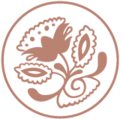Introduction
The Manitoba Branch has created this exhibit, consisting of eight colourful panels, which tell the story of ancient traditional Ukrainian embroidery and Olha Kosach’s attempt to preserve the authentic ancient Ukrainian folk art traditions before they were lost in contemporary adaptations.
In 1876, Olha Kosach, mother of Lesia Ukrainka, concerned about the Russian Empire’s ban on Ukrainian language and traditions, self-published Ukrainian Ornamental Designs in Russian and French. Her publication won the Prix Award at the World Exposition in Paris in 1878 and was reprinted five times in her lifetime.
After our exposition, the colourful panels, 24”by 36”, will be available as a TRAVELLING EXHIBIT. They are suitable for educators, museums, libraries or simply as an attractive educational display.
To express your interest, please contact the Ukrainian Museum of Canada, UWAC, Manitoba Branch at ukrmuswpg@hotmail.com.

Embroidery Tells A Story
Thematic motifs found in ancient embroidery ornamentation can be traced to pre-historic times and have symbolic significance. With the passing of time, the meaning of the symbols was forgotten but the symbols continued to be passed from generation to generation.
The symbols can be divided into several categories:
- EARLY GEOMETRIC MOTIFS - circles, rosettes, stars, triangles, squares and bands representing the sun and other celestial bodies
- PLANTS - oak leaves, acorns, cranberries, periwinkle, sunflower, grapes
- BIRDS - doves, mythical firebirds, eagles
- ANIMALS - reindeer, oxen, rams, horses
In early times waxed natural flaxen thread was used on hand loomed linen or hemp and by the end of the 1800s thread coloured with plant dyes became common.
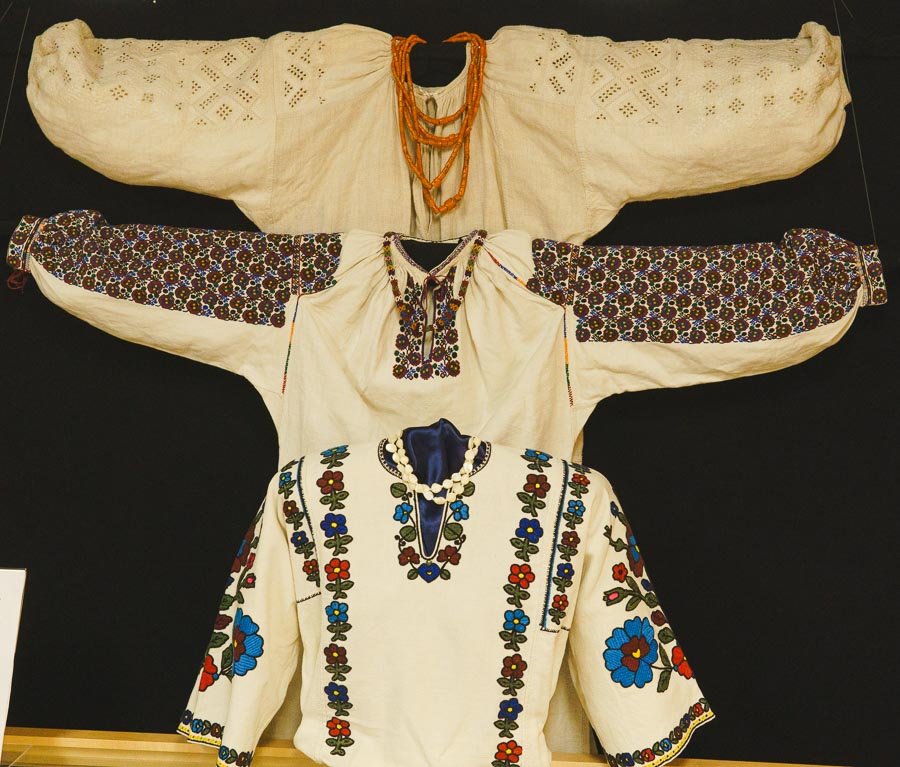

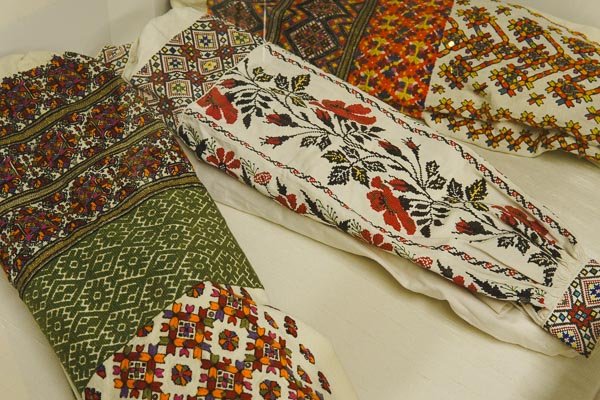
Olha Kosach
Raising National Awareness
Olha Drahomanova Kosach, (1849 - 1930), was known by her pseudonym, Olena Pchilka. Writer, ethnographer, translator, women's activist and community leader, she was a highly principled woman who instilled the authentic ancient Ukrainian folk art tradition and language in her children, two sons and four daughters.
Olha Kosach was born in the Poltava region into a privileged family who actively opposed the oppressive political and cultural policies of the Russian Empire. She travelled widely in Europe meeting with the leading intellectuals of the day. Olha Kosach was concerned about the Russion Empire's ban on the Ukrainian languauge and culture and took it upon herself to document the ancient Ukrainian folk art tradition.
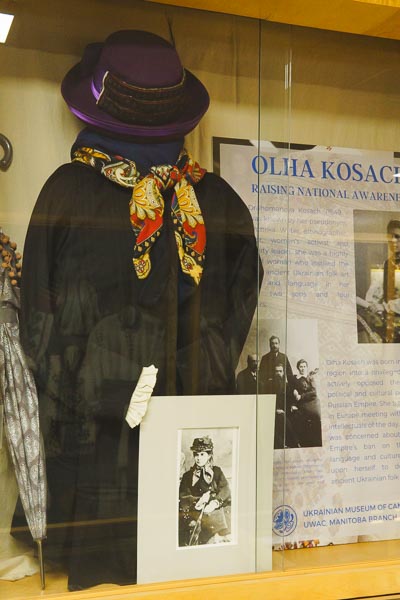
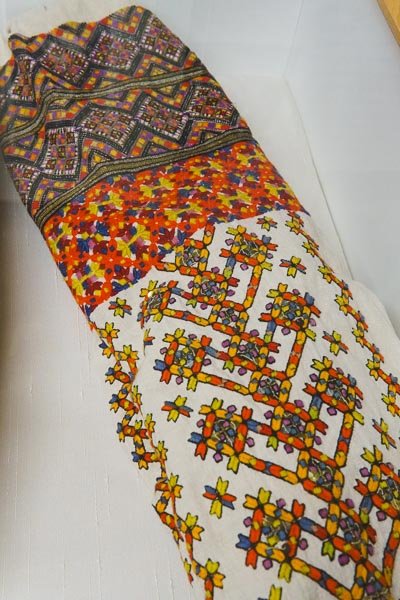



A Ukrainian Family Archive, Drahomanova-Kosach Family
The Manitoba Branch of the Ukrainian Museum of Canada, UWAC, has one of five copies of the Drahomanova-Kosach family album of 248 black and white photographs spanning the period from 1860 to 1949. This family archive, compiled by Izidora Kosach, includes extensive hand written descriptions in Ukrainian of the photographs, hand written notes on some photographs and in most cases the name of the photographer. Olha Kosach and her family wore traditional Ukrainian embroidery as an accepted part of European dress.
This album includes Olha Kosach's daughter, known by her pseudonym Lesia Ukrainka, and close relatives of Lesia Ukrainka, friends and acquaintances, buildings and landscapes where Lesia was sent for tuberculosis treatment.
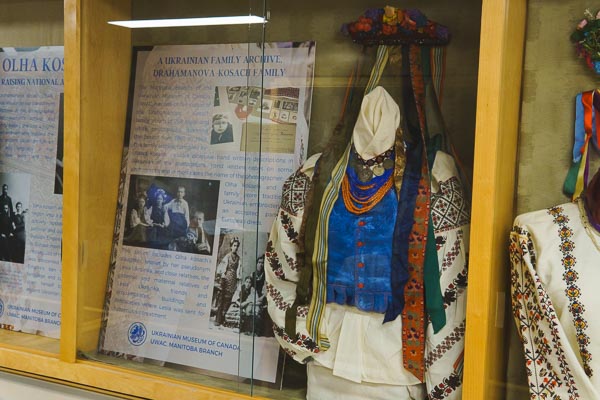

Ukrainian Ornamental Designs
In 1876, Olha Kosach self-published, in Russian and French, UKRAINIAN ORNAMENTAL DESIGNS (Ukrainskyi Ornament).
This book is considered the first systematic work on the study of Ukrainian folk art and is an invaluable contribution to the development of the national culture of Ukraine.
UKRAINIAN ORNAMENTAL DESIGNS was awarded the Prix Award at the World Exposition in Paris in 1878 and was republished five times during Kosach's lifetime.
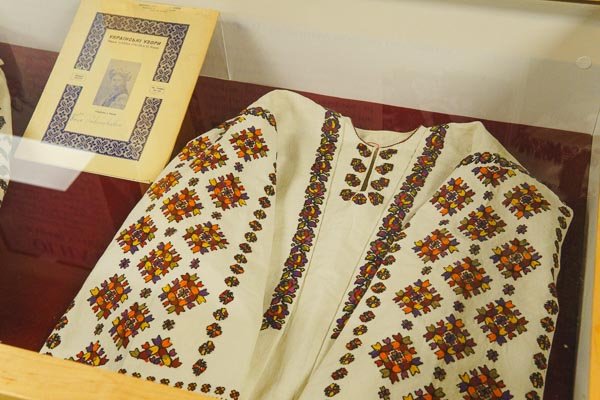
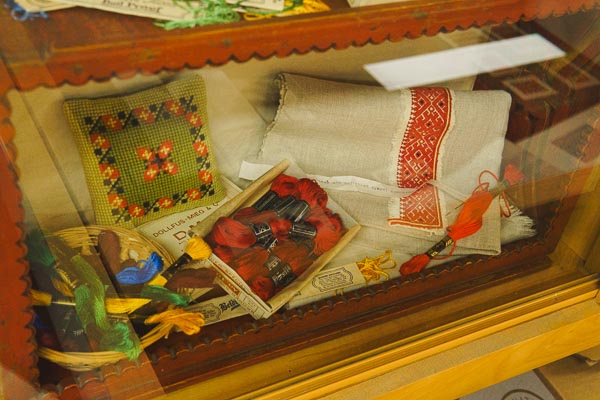
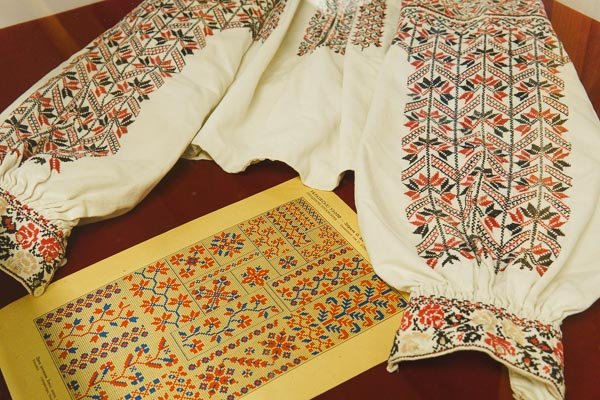
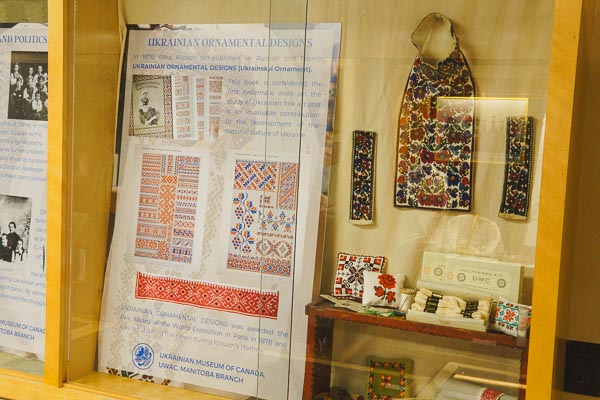

Early Traditional Ukrainian Embroidery Stitches
The oldest Ukrainian embroidery stitches imitated weaving.
ZAVOLIKANNYA - The needle is used as a shuttle on the face of the fabric and is drawn horizontally.
NYZYNKA - Embroidery is worked vertically with a needle on the reverse side of the material with a technique that is similar to that of weaving. Spaces in the design can be filled in with contrasting colours.
VYRIZUVANNYA - A type of cut and drawn work, traditionally done with white thread, in which both horizontal and vertical threads are cut and removed. Various stitches are used to bind the edges and complete the design.
HLAD - is the flat or satin stitch created with threads laying straight and parallel to each other.
Foreign wares brought new ornamentation into the country such as cross-stitch. In the 1850s, factory made aniline dyes brought brilliant, intense colours which lacked the harmony of natural plant dyes.
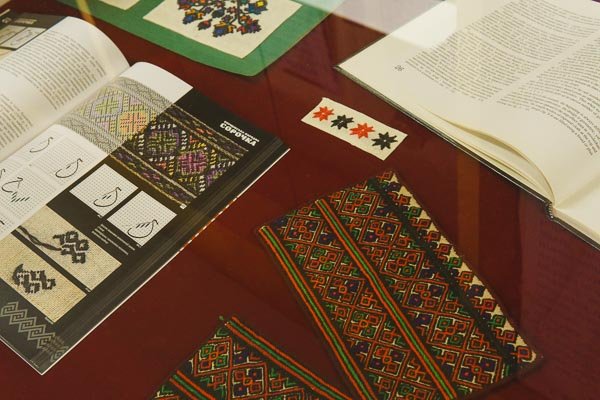
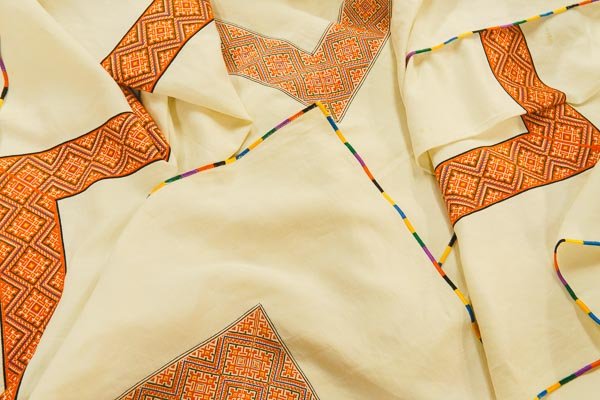
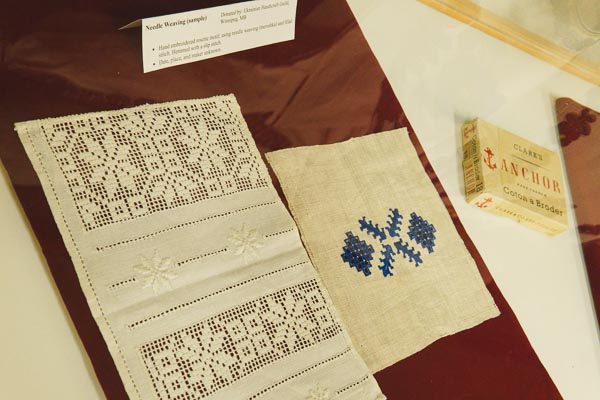
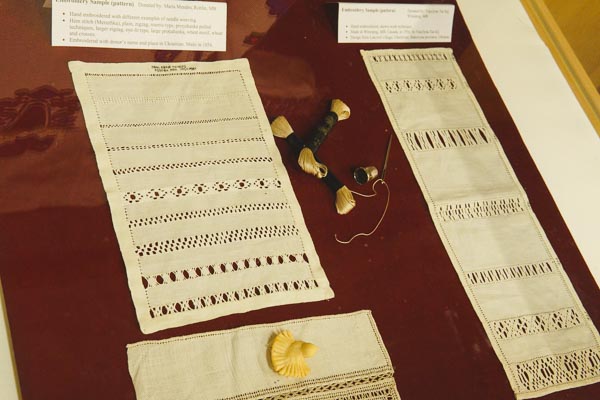
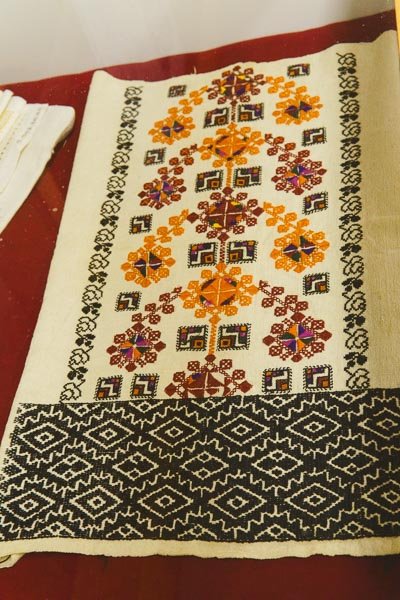
Culture and Politics Intersect
Olha and Petro Kosach raised their children immersed in village life. Only the Ukrainian language was used in the household and to encourage this practice the children were educated by Ukrainian tutors at home, in order to avoid schools that taught Russian as the primary language. She wrote original poetry, plays, short fiction and stories for her children. She translated many classics of world literature Ovid, Goethe, Gogol, Hans Christian Anderson and Victor Hugo in order to make them available in the Ukrainian language.
Olha Kosach and her family wore traditional Ukrainian embroidery as an accepted part of European dress. Many of the Kosach family contemporaries in the arts, sciences and in politics followed suit by wearing Ukrainian embroidered shirts to send a message of social significance. By demonstrating their nationality in their dress they advanced the struggle for Ukrainian Independence.
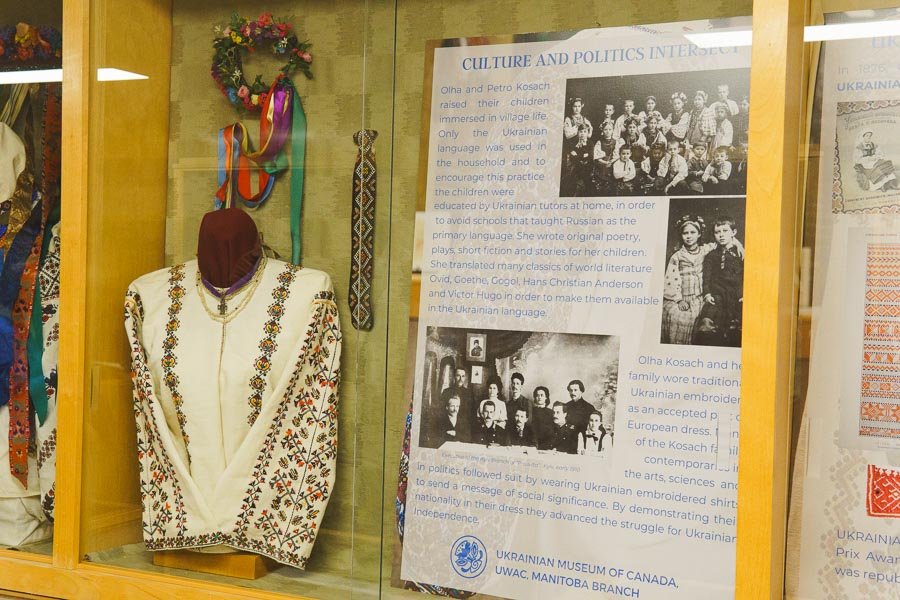
Unity in Ukrainian Embroidery
The Orange Revolution of 2004 had a profound effect on their national identity and the way Ukrainians perceived themselves. It brought purpose and meaning to wearing Ukrainian embroidery. 2006 formalized Vyshyvanka Day or World Embroidery Day, held the third Thursday in May. Once again, as in the time of Olha Kosach, Ukrainian embroidery has become a personal, social, and sometimes political statement, as well as a unifying factor.
Today, museums and private collectors are working to improve the proper storage of their collections and to digitize their holdings. The increasing availability of collections on the Internet has led to additional professional research on the history of embroidery and is the subject of numerous publications.
Olha Kosach's "Ukrainian Ornamental Designs" remains a classic systematic work on the study of Ukrainian folk art and a permanent record of the oldest authentic emrboidery tradition.

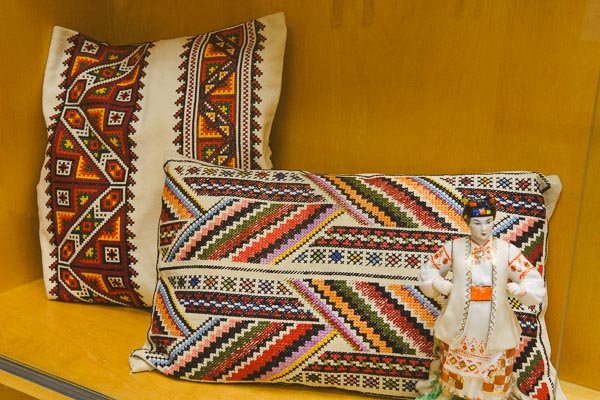
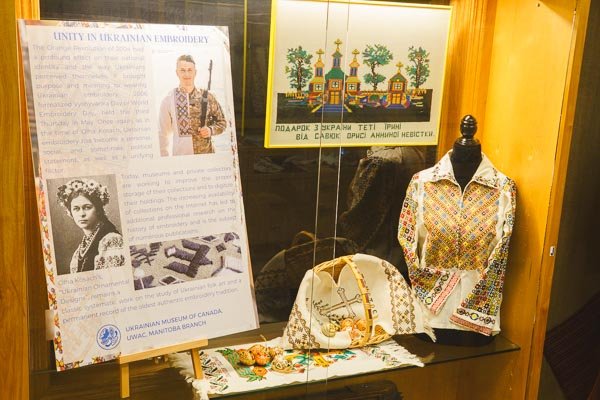
Olha Kosach
Women of Influence
This exhibit was made possible through the generosity of the Honourable Raynell Andreychuk in supporting the Women of Influence project.
Olha Kosach, one of the Women of Influence, was chosen for this project as she was a principled woman commited to opposing the oppresive political and cultural policies of the Russian Empire by the way she chose to live her life and influence those around her. She used her writing skills to awaken the national consciousness of Ukrainian people. Her legacy is remembered to this day.

